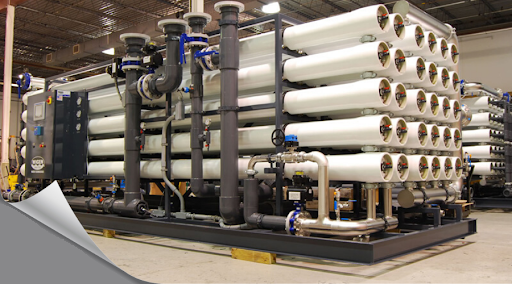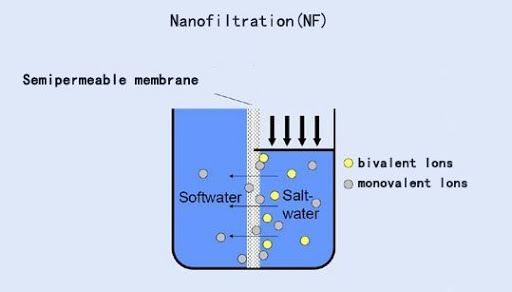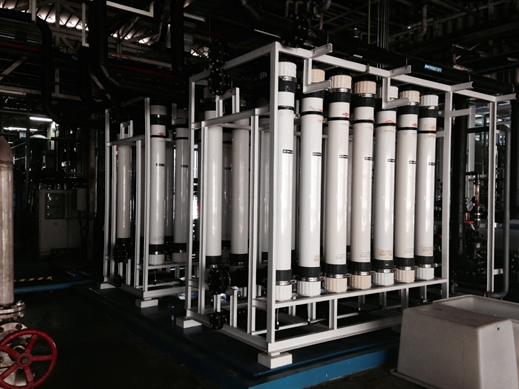Highly efficient, low-energy pressure-driven separation
Nanofiltration (NF) is a membrane liquid-separation technology sharing many characteristics with reverse osmosis (RO). Unlike RO, which has high rejection of virtually all dissolved solutes, NF provides high rejection of multivalent ions, such as calcium, and low rejection of monovalent ions, such as chloride.

As the globally recognized leader in liquid-separation innovations and solutions, we help customers across industries and markets solve their toughest water-treatment challenges with our experience, expertise and nanofiltration membrane technology.

Nanofiltration (NF) is a relatively recent membrane filtration process used most often with low total dissolved solids water such as surface water and fresh groundwater, with the purpose of softening (polyvalent cation removal) and removal of disinfection by-product precursors such as natural organic matter and synthetic organic matter.
Nanofiltration is also becoming more widely used in food processing applications such as dairy, for simultaneous concentration and partial (monovalent ion) demineralisation.
Between reverse osmosis and ultrafiltration
Nanofiltration refers to a specialty-membrane process that rejects dissolved solutes in the approximate size range of 1 nanometer (10 Angstroms) — hence the term “nanofiltration.”
With respect to the size and weight of solutes that nanofiltration membranes reject, NF operates in the realm between reverse osmosis (RO) and ultrafiltration (UF) : Organic molecules with molecular weights greater than 200 – 400 are rejected. Nanofiltration membranes can effectively reject, among other contaminants:
- Dissolved organics.
- Endotoxins/pyrogens.
- Insecticides/pesticides.
- Herbicides.
- Antibiotics.
- Nitrates.
- Sugars.
- Latex emulsions.
- Metal ions.
It also rejects certain soluble salts. Specifically, NF rejects dissolved salts in the range of 20 – 98 percent. Salts which have monovalent anions (e.g., sodium chloride or calcium chloride) have rejections of 20 – 80 percent, whereas salts with divalent anions (e.g., magnesium sulfate) have higher rejections of 90 – 98 percent. Transmembrane pressures are typically 50 – 225 psi (3.5 – 16 bar).
The ideal nanofiltration membrane has a very high water permeability, but the ideal permeability of solutes might be near zero or some higher value, depending on the solute and application. For example, an application may require near-zero permeability for pesticides and 50 percent permeability for calcium ions.
Typical applications of nanofiltration membrane systems include:
- The removal of color and total organic carbon (TOC) from surface water.
- The removal of hardness or radium from well water.
- The overall reduction of total dissolved solids (TDS).
- The separation of organic from inorganic matter in specialty food* and wastewater applications.

